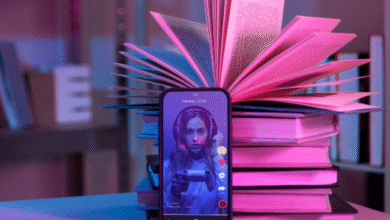Best AI image generators for beginners
If you’re just getting started, the best AI image generators for beginners feel like magic without the mess. You type a prompt, tweak a few options, and out pops an image you’re proud to share. Below, you’ll find beginner-friendly AI image tools, simple workflows, and smart tips to help you create polished visuals without a steep learning curve.
What makes beginner-friendly AI image tools great
- Clear onboarding: Step-by-step hints, tutorials, and prompt examples that build confidence fast.
- Simple interface: Clean controls for size, style, and variations—no jargon, no clutter.
- Strong defaults: Good-looking results even when your prompt is short or vague.
- Helpful editing: Built-in AI photo editing for beginners like background removal, inpainting, and upscaling.
- Templates and styles: Ready-made styles and filters so you can iterate quickly.
- Fair free tier: Enough credits to experiment, plus transparent upgrades when you’re ready.
Top AI art generators for beginners
Canva AI Image Generator
Canva blends text-to-image AI with an easy drag-and-drop editor. It’s perfect for social graphics, presentations, and quick mockups.
- Why it’s great: Templates, brand kits, and one-click layouts make design feel effortless.
- Watch-outs: Advanced control over text-to-image settings is limited compared with pro platforms.
- Best for: Social posts, flyers, thumbnails, and quick marketing visuals.
- Free or paid: Generous free tier, simple upgrades when you need more.
Adobe Firefly
Firefly focuses on prompt-based AI art creation and text effects with a polished, professional feel—ideal for creative design workflows.
- Why it’s great: Crisp output, smart variations, and easy refinement inside Adobe apps.
- Watch-outs: Full power shines when used alongside the broader Adobe ecosystem.
- Best for: Brand-safe visuals, ads, posters, and creative composites.
- Free or paid: Free credits for light use, paid plans for heavier workflows.
DALL·E
DALL·E delivers vivid, coherent images from natural language prompts. It handles complex concepts and stylizations with ease.
- Why it’s great: Strong understanding of composition, style, and object relationships.
- Watch-outs: Fewer granular knobs than some generative AI art platforms.
- Best for: Concept art, illustrations, and quick visual ideation.
- Free or paid: Typically credit-based; expect paid usage for sustained creation.
Microsoft Designer
Designer pairs text-to-image AI with smart layout suggestions. You describe what you need, and it assembles on-brand designs in minutes.
- Why it’s great: Automated design variants and simple editing built around your prompt.
- Watch-outs: Less control than advanced image labs; it aims for speed and simplicity.
- Best for: Social campaigns, ads, and on-the-fly content creation.
- Free or paid: Free to try with optional premium features.
Leonardo AI
Leonardo balances ease of use with deeper controls, style libraries, and model choices—even for stable diffusion image generators.
- Why it’s great: Preset styles, training options, and crisp output for beginners and tinkerers.
- Watch-outs: More features can mean more to learn, but onboarding is friendly.
- Best for: Game assets, concept art, and styled illustrations.
- Free or paid: Free daily generation limits; paid tiers for heavy usage.
NightCafe
NightCafe simplifies generative AI art platforms with daily credits, galleries, and community challenges that spark ideas.
- Why it’s great: Beginner-friendly UI, inspiration from community prompts, and easy sharing.
- Watch-outs: Credit management matters as you scale your projects.
- Best for: Artistic posters, abstract art, and iterative creative experiments.
- Free or paid: Free credits plus paid top-ups.
Playground AI
Playground offers a clean interface to multiple text-to-image AI models, including beginner-focused workflows and refinements.
- Why it’s great: Fast iterations, flexible models, and straightforward editing tools.
- Watch-outs: More options can be overwhelming—stick to basic settings to start.
- Best for: Exploration, mood boards, and style testing.
- Free or paid: Free plan to explore, paid for higher resolution and volume.
How to pick simple AI image creation software
- Your goal: Define what you’ll make most—social posts, illustrations, product shots, or ads.
- Learning curve: Choose tools with guided prompts, examples, and a friendly editor.
- Editing needs: Ensure access to inpainting, background removal, and upscaling for polish.
- Style control: Look for style presets and seed options for consistent looks across projects.
- Export formats: Check for PNG, JPG, and transparent backgrounds as standard.
- Budget fit: Start with best free AI image makers; upgrade once your workflow sticks.
Quick start workflow for prompt-based AI art creation
- Write a clear prompt:
Describe subject, style, lighting, and mood.
Example: “A cozy watercolor fox, soft morning light, pastel palette, gentle brush texture.” - Add simple modifiers:
Use 2–3 descriptors: “high detail,” “cinematic lighting,” “studio background.” - Generate 4–8 options:
Pick the strongest composition, not just the prettiest style. - Refine with variations:
Ask for tighter framing, different color palettes, or minor style shifts. - Edit and upscale:
Use user-friendly AI image editors for cleanup—remove background, fix small artifacts, and export at higher resolution. - Save your formula:
Keep a “prompt recipe” doc so you can repeat consistent brand visuals.
Free vs paid AI art software for new users
- Free plans:
Pros: Risk-free testing, enough credits to learn, great for casual projects.
Cons: Lower resolution, watermarks, or queue times during peak hours. - Paid plans:
Pros: Higher resolution, faster speeds, commercial use options, and advanced features.
Cons: Subscription costs and a learning curve for deeper controls.
Tip: Start free, build a tiny portfolio, then upgrade only when a paid feature saves you time or unlocks revenue.
FAQ about the best AI image generators for beginners
- What are the best free AI image makers for beginners?
Look for platforms with generous free tiers, templates, and built-in editors. Canva, Playground, and NightCafe are popular places to start. - Which AI art generators for newbies are easiest to learn?
Tools with prompt examples, style presets, and simple editors win. Canva and Designer focus on speed; Firefly and DALL·E balance ease with quality. - Is Stable Diffusion beginner-friendly?
Yes—if you use hosted stable diffusion image generators like Leonardo or Playground. They simplify settings while keeping creative control. - Are AI drawing tools for beginners good for logos or branding?
They’re great for concepts and mood boards. For final logos, refine with a vector editor or a designer to ensure scalability and uniqueness. - Do I own AI-generated images?
It depends on the platform’s terms and your usage plan. Check license details, especially for commercial projects.
Conclusion and next steps
Choosing the best AI image generators for beginners comes down to clarity, control, and comfort. Start with a beginner-friendly AI image tool that matches your goals, use prompt “recipes,” and iterate quickly. Ready to create? Pick one tool from this list, try a simple prompt today, and watch your ideas take shape.






One Comment